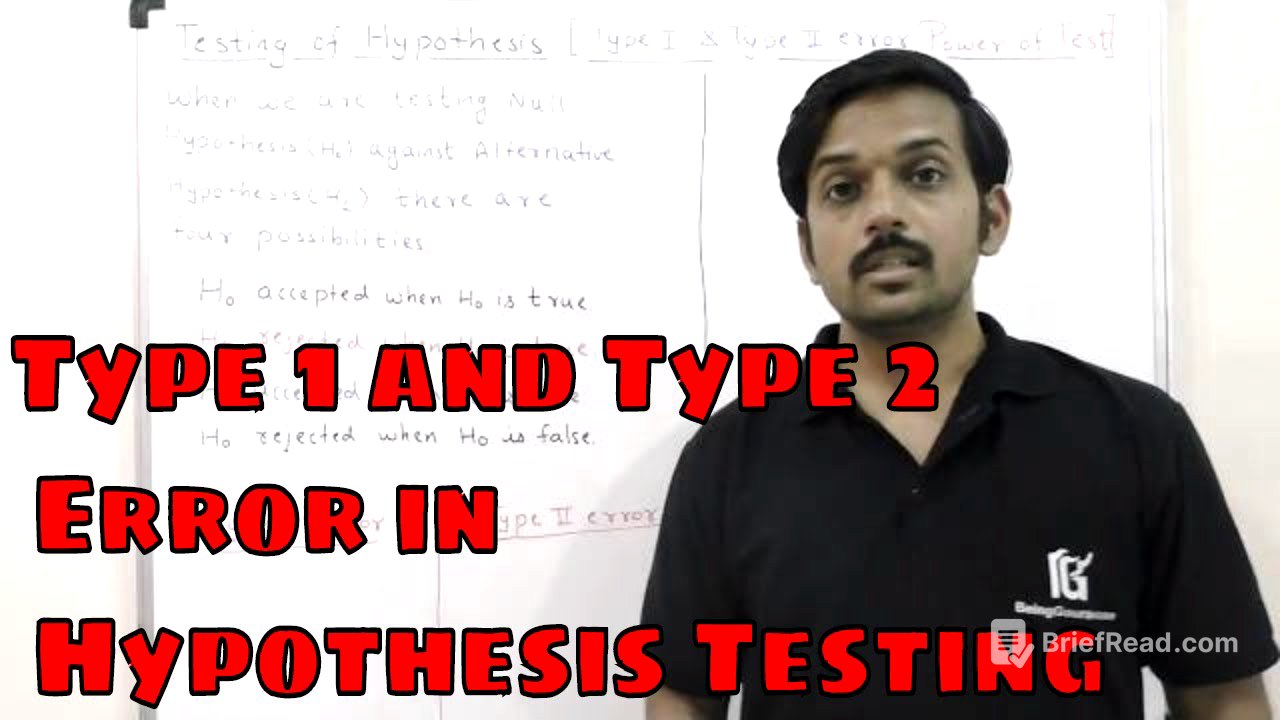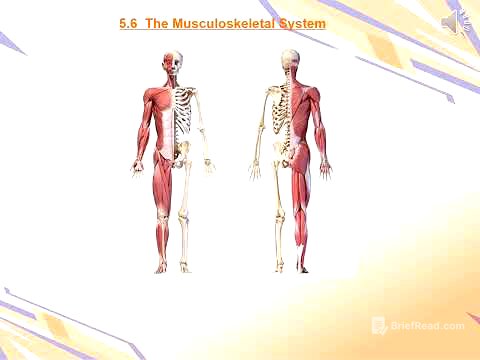TLDR;
This video explains Type 1 and Type 2 errors in statistics, along with the concept of the power of a test. It clarifies the differences between these errors using examples related to medical treatments and discusses how to minimise them. The video also explains how to calculate and interpret the power of a test, which indicates the probability of correctly rejecting a false null hypothesis.
- Type 1 error: Rejecting a true null hypothesis.
- Type 2 error: Accepting a false null hypothesis.
- Power of a test: Probability of correctly rejecting a false null hypothesis.
Introduction to Type 1 and Type 2 Errors [0:00]
The video introduces the concepts of Type 1 and Type 2 errors in statistical hypothesis testing. A Type 1 error occurs when a true null hypothesis is incorrectly rejected, while a Type 2 error happens when a false null hypothesis is incorrectly accepted. The presenter uses the analogy of a "ticket" to explain these errors, indicating that a wrong decision has been made.
Understanding Type 1 Error [1:03]
Type 1 error, also known as a false positive, is further explained. The probability of making a Type 1 error is denoted by alpha (α). This error occurs when the null hypothesis is true, but it is rejected. The presenter clarifies that α equals the probability of rejecting the null hypothesis when it is actually true.
Understanding Type 2 Error [1:59]
Type 2 error, also known as a false negative, is discussed. The probability of making a Type 2 error is denoted by beta (β). This error occurs when the null hypothesis is false, but it is accepted. The presenter explains that β represents the probability of accepting the null hypothesis when it is actually false, meaning an alternative hypothesis (H1) is true.
Real-World Example: Medical Treatment [3:06]
A medical example is used to illustrate Type 1 and Type 2 errors. If a medicine is claimed to cure a disease, the null hypothesis would be that the medicine has no effect. A Type 1 error would occur if the medicine is actually ineffective, but it is claimed to be effective and treatment is continued, potentially causing adverse effects. A Type 2 error would occur if the medicine is actually effective, but it is deemed ineffective and treatment is discontinued, depriving patients of a potential cure.
Minimising Type 1 and Type 2 Errors [5:53]
The video addresses how to minimise both Type 1 and Type 2 errors. It is difficult to minimise both simultaneously because reducing one type of error often increases the other. One approach is to increase the sample size, which generally helps to reduce both types of errors.
Power of a Test: Introduction [6:58]
The concept of the power of a test is introduced. The power of a test is the probability of correctly rejecting a false null hypothesis. It is calculated as 1 - β, where β is the probability of a Type 2 error. The goal is to maximise the power of the test, meaning to increase the likelihood of correctly identifying that the null hypothesis is false.
Calculating and Interpreting Power of a Test [8:28]
The presenter explains how to interpret the power of a test. A higher power (close to 1) indicates that the test is working well, meaning it is likely to reject the null hypothesis when it is false. Conversely, a lower power (close to 0) suggests that the test is not effective at detecting when the null hypothesis is false. The power of the test is a critical measure of the test's ability to produce correct results.
Conclusion [10:36]
The video concludes by summarising the key concepts of Type 1 and Type 2 errors, as well as the power of a test. Understanding these concepts is crucial for interpreting statistical results and making informed decisions based on hypothesis testing.









